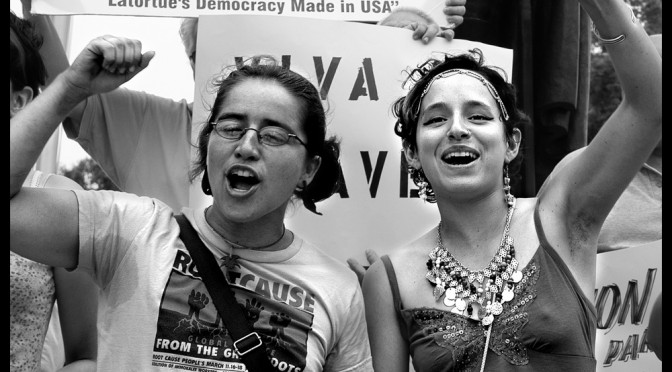By Steve Brier
One of the great ironies is that workers all over the world celebrate Labor Day on May 1st, not the first Monday in September, the way we do in the U.S. Most people assume the choice of May 1st has something to do with the former Soviet Union. They don’t realize that the idea to celebrate May Day, International Workers’ Day, in fact traces its roots all the way back to Chicago in 1886. This was a period of enormous U.S. economic growth, with millions of immigrant workers from Europe, Mexico, and China pouring into the cities and countryside to work in the mills, factories, fields, and mines. Working conditions and wages were deplorable; workers sometimes toiled 12, 14 or even 16 hours a day, 6 or 7 days a week for meager wages.
The young labor movement at the time united around a demand to shorten the working day to 8 hours (the “normal” length that we take for granted today) and called for a nationwide strike on May 1, 1886, to demand that employers shorten the hours of labor. Chicago was the center of the national 8-hour protest movement. The city was home to a powerful socialist and anarchist movement and a growing labor movement that fought for workers’ rights. Sixty thousand Chicago workers, representing all ethnic and nationality groups, walked out on May 1st to demand the 8-hour day. Two days into the strike the Chicago police shot and killed two workers and wounded dozens on one of the hundreds of picket lines across the city.
The anarchists called a protest meeting for the evening of May 4th in Haymarket Square and as the rally was ending the Chicago police marched on the remaining crowd. From the darkness someone (whose identity was never determined) threw a dynamite bomb, killing one policeman and wounding 70 others. In the chaos that followed, the Chicago authorities cracked down on the anarchist movement, arresting its key leaders (Albert Parsons, August Spies and six others) and charging them with murder, even though there was no concrete evidence against them. After a show trial they were convicted and sentenced to death. Four of them (including Parsons and Spies) were indeed hanged in Nov. 1887.
After the deaths of the Haymarket Martyrs workers and labor radicals around the world began celebrating May 1st as a day of international working class solidarity and it has been celebrated world-wide ever since. American business leaders and politicians wanted to distance the U.S. from May Day because of its radical origins. With business support, in 1894 Pres. Cleveland officially declared the first Monday in September as Labor Day. Last Year House Republican Majority Leader Eric Cantor tweeted that Labor Day should “celebrate those who have taken a risk, worked hard, built a business and earned their own success.” So much for a celebration of American workers!
Just as they did in 1886, immigrant workers took the lead in the U.S. 120 years later to bring the American labor movement back to celebrating May Day as Labor Day. On May 1st, 2006, led largely by Latino workers and students, they organized El Gran Paro Estado-unidense, “the Great American Boycott,” which called on all immigrant workers to leave work for the day to remind our country of the important contributions that all workers, including immigrant workers, make to America’s economy, society and culture. As we celebrate International Workers’ Day in 2014 let us remember the Haymarket Martyrs from 1886 and the thousands of immigrant workers in 2006 and every year since as we celebrate those who made our world by their toil.
Dr. Stephen Brier is a labor historian and part of the Consortial Faculty at The Murphy Institute.



